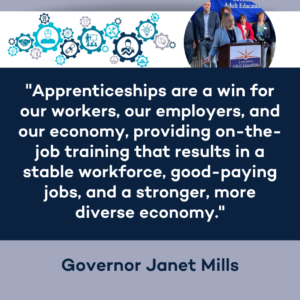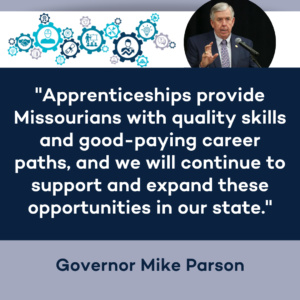Lessons From NGA Center’s Workforce Symposiums
The bi-annual NGA Center for Best Practices (NGA Center) Workforce Symposiums provide an opportunity for state workforce leaders to address the most pressing topics they face. These convenings, as a part of the Workforce Development Technical Assistance Program, bring together the National Association of State Workforce Board Chairs and the National Association of State Liaisons for Workforce Development Partnerships to share best practices, common challenges and innovative solutions for carrying out their Governor’s vision for workforce development. Apprenticeship, youth apprenticeship, and other forms of work-based learning were a priority topic of discussion this year during the Winter and Summer Workforce Symposiums. Throughout various sessions, state workforce system leaders discussed the importance and impact work-based learning programs can have on a state’s ability to meet the labor demands of industry by providing them with a skilled, prepared pool of workers.

During roundtable sessions, attendees shared successes related to their recent apprenticeship and training initiatives and programs. Representatives from Maine described Governor Janet Mills’ push to expand apprenticeships and pre-apprenticeships across the state by awarding 14 organizations with a total of $12.3 million in grants. Providing state funding streams for work-based learning programs is an impactful policy option highlighted in the recent NGA publications, Governors Youth Apprenticeship Playbook to Advance Youth Apprenticeship (“Governors Youth Apprenticeship Playbook”), and Governors Apprenticeship Playbook To Build A Thriving And Inclusive Economy (“Governors Apprenticeship Playbook”). Likewise, leaders from Montana described Governor Greg Gianforte’s rule changes to allow one journeyman to supervise two apprentices, thus reducing a logistical and regulatory barrier for employers. This approach is highlighted as a powerful policy lever Governors can implement to increase the number of available apprenticeships in the Governors Youth Apprenticeship Playbook. Several other states, such as California, Alaska, Illinois and Indiana, also highlighted specific apprenticeship programs and increases in work-based learning enrollment.
This work recently culminated in a session titled “Workforce Systems Supporting Apprenticeship and Work-Based Learning” at the NGA Summer 2022 Workforce Symposium. During this session, Karen Kirchler, Deputy Commissioner of Workforce Development for the Technical College System of Georgia (TCSG), highlighted Georgia QuickStart, which provides customized training free-of-charge to qualified new, expanding and existing businesses. This discussion provided peer states with a valuable example of how the workforce system can engage employers in work-based learning opportunities, as is suggested in the Governors Youth Apprenticeship Playbook.

Kirchler was joined by Dr. Mardy Leathers, Director of Missouri Division of Workforce Development, who described Missouri’s apprenticeship transformation starting in 2018. Leathers explained how the state drastically expanded the number of apprenticeships and met their 2025 goal of having 20,000 apprentices 30 months ahead of schedule, while also launching an initiative to fund pre-apprenticeship programs in 2021. One of the main ways Missouri spurred this apprenticeship wave was through Governor Mike Parson’s 2019 Executive Order, which established the Office of Apprenticeship and Work-Based Learning. As described in the Governors Apprenticeship Playbook and the Governors Youth Apprenticeship Playbook, establishing a clear governance structure is a key element to creating and maintaining a strong work-based learning ecosystem.
This “Workforce Systems Supporting Apprenticeship and Work-Based Learning” session, along with the roundtables, provided attendees with several ideas for expanding work-based learning in their own states and highlighted the value workforce leaders place on these opportunities.
With this increasing interest among Governors, employers and state workforce leaders, NGA continues to develop resources and support states as they adopt policies and practices that expand the reach and scope of these opportunities. To that end, NGA recently hosted a two-part Virtual Action Lab, as a Partnership to Advance Youth Apprenticeship (PAYA) national partner, which offered state participants the opportunity to hear from national experts, share information and best practices with their peers, and develop actionable steps to pursue policy change on the issue of youth apprenticeship that best suit their state needs.
If you are interested in learning more about policy options to improve the youth apprenticeship landscape, please contact Jordan Morang at JMorang@nga.org.












